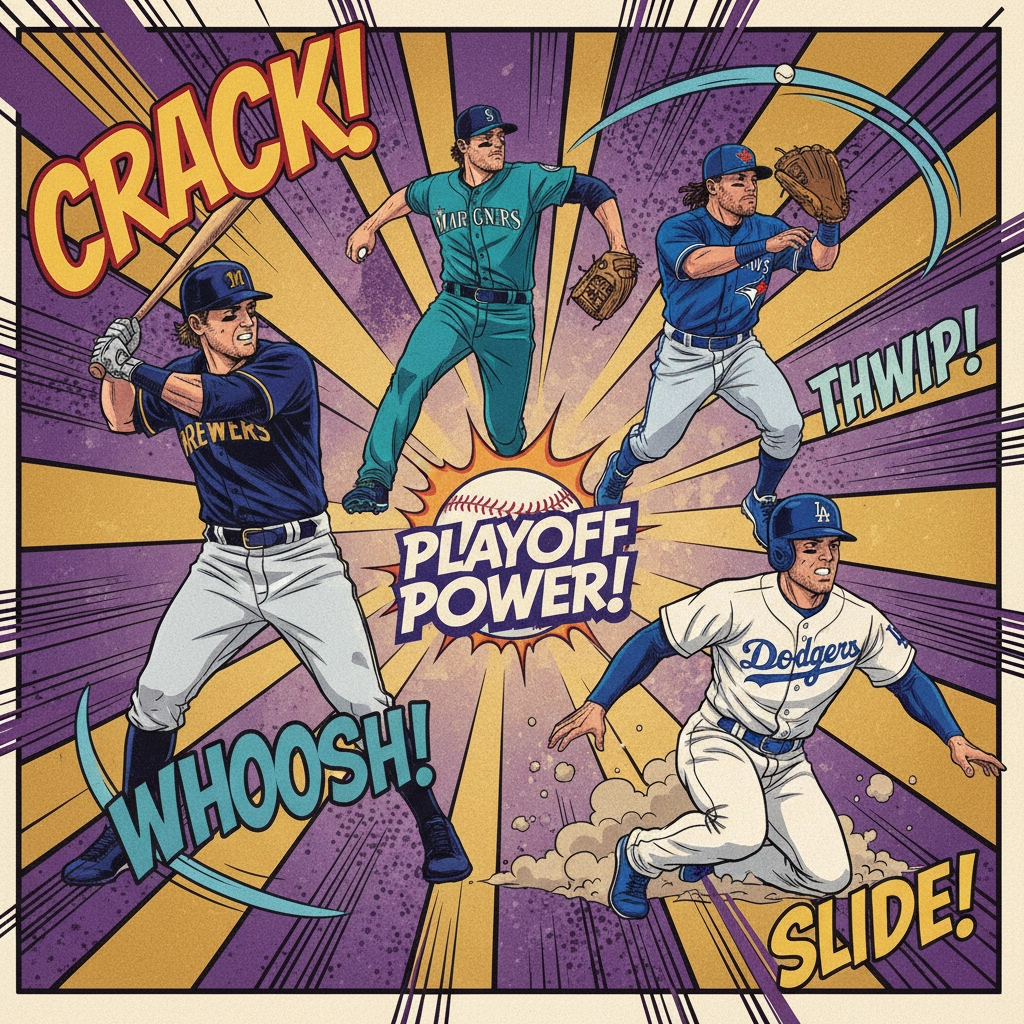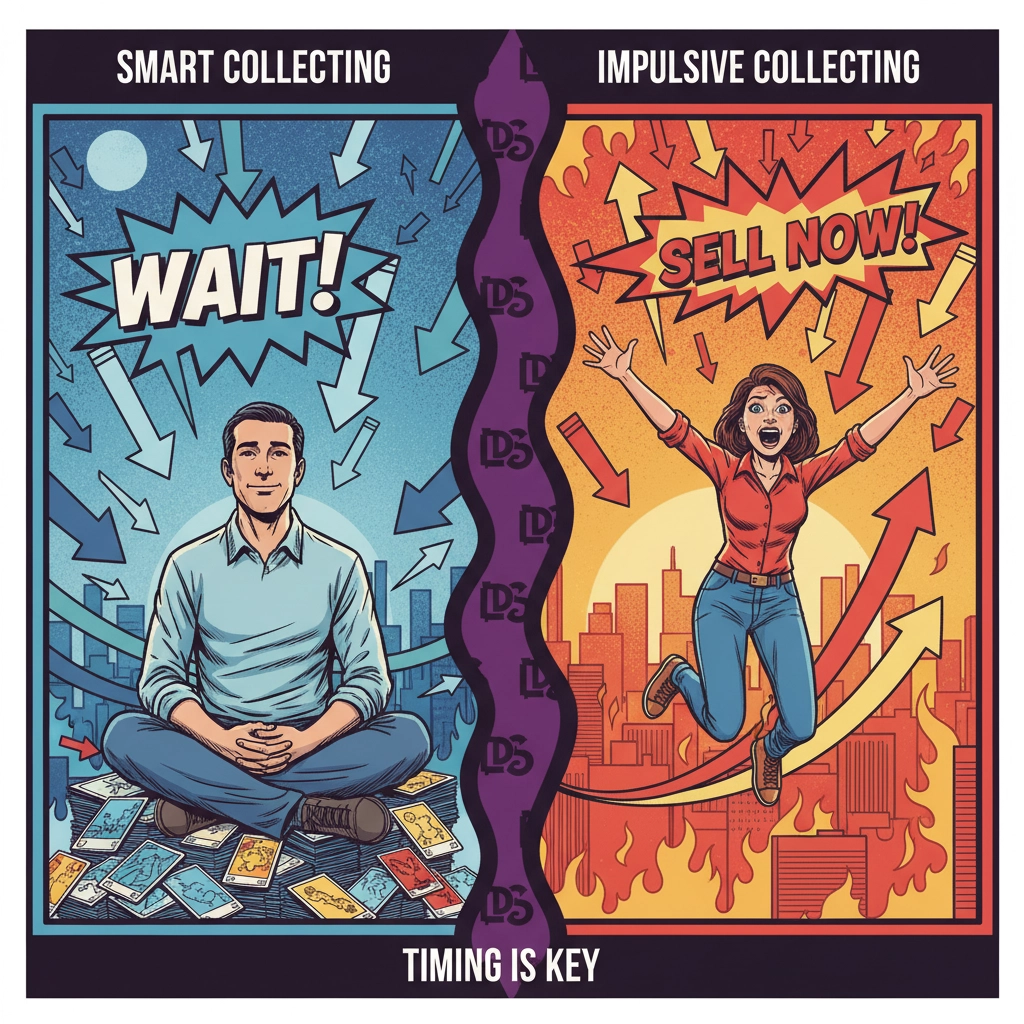October baseball doesn't just deliver heart-stopping moments: it creates wild card market swings that can make or break a collector's portfolio. When playoff heroes emerge, their card values can skyrocket overnight. But here's the catch: most of these gains disappear faster than a stolen base attempt.
Let's break down what's happening with this year's playoff contenders and how smart collectors can navigate the chaos.
The Playoff Price Pump is Real (But Short-Lived)
Every October, we see the same pattern play out. A utility player delivers a clutch hit in Game 7, and suddenly his 2022 Topps Chrome rookie is selling for 3x what it was worth in September. A starting pitcher throws eight shutout innings against the Yankees, and his Bowman First prospects are flying off eBay.
The psychology is simple: recency bias meets FOMO, and collectors start buying with their hearts instead of their heads. But here's what most people don't realize: approximately 70-80% of playoff-driven price spikes return to earth by the following All-Star break.
Take Freddie Freeman's run with the Braves. His cards saw legitimate appreciation during their championship push, but the sustained value came from the championship itself, not just the playoff performance. Most players don't get that happy ending.

Why Milwaukee, Seattle, Toronto, and LA Are Card Market Gold Right Now
Milwaukee Brewers: This team embodies the perfect playoff card storm. They're a small-market franchise that doesn't get regular national attention, meaning their players are undervalued in the hobby. When Willy Adames or Christian Yelich delivers in October, collectors who've never paid attention to Milwaukee suddenly want their cards.
The key here is young talent. Players under 27 see the biggest playoff bumps because they still have career upside that can justify elevated prices. Look for Brewers prospects in 2023 Bowman Draft or 2024 Topps Chrome: these could see significant movement if Milwaukee makes noise.
Seattle Mariners: Talk about a fanbase hungry for October baseball. The Mariners' playoff drought created pent-up collector demand that explodes when they finally break through. Julio Rodríguez cards are already premium-priced, but supporting players like Eugenio Suárez or Logan Gilbert could see massive spikes during a deep playoff run.
Seattle's advantage is their passionate local collector base. When the Mariners succeed, Pacific Northwest collectors go all-in on team cards, creating regional price bumps that can spread nationally.
Toronto Blue Jays: The Vladimir Guerrero Jr. situation perfectly illustrates playoff card volatility. During their recent playoff appearances, Vlad Jr. looked like "the second coming of Barry Bonds" for stretches, sending his cards through the roof. But then reality sets in: if he reverts to an "okay" season without elite power numbers, those elevated prices crash hard.
Bo Bichette and George Springer represent similar risk/reward scenarios. Their cards can surge during playoff success but face steep declines if the performance doesn't sustain.
Los Angeles Dodgers: Here's the thing about the Dodgers: they're always relevant. Mookie Betts, Freddie Freeman, and Will Smith maintain collector interest year-round because of the team's consistent playoff presence and massive fanbase.
But this constant attention means Dodgers cards don't see the same dramatic playoff spikes as small-market teams. The upside is more limited, but the downside risk is lower too. Dodgers cards represent safer, steadier investments during October volatility.
The Brand Breakdown: What's Moving During Playoff Season
Topps Chrome: The flagship parallel-heavy product sees the most playoff action. Those /299 orange refractors and /50 gold refractors of playoff performers can triple in value overnight. Chrome's wide collector base means playoff heroes get immediate attention.
Bowman Draft/Chrome: Prospect cards from these products are playoff gold mines. When a young call-up delivers in October, their Bowman First cards explode. These represent the highest risk/reward playoff plays.
Heritage: The vintage design attracts collectors who want playoff performers in classic packaging. High-number short prints of October heroes become especially sought-after.
Topps Series 1/2: Base rookie cards and key veterans see steady increases during playoff runs. These are safer plays with lower upside but more predictable patterns.

Smart Strategies for Playoff Card Trading
For Sellers: Timing is everything. List cards of playoff performers immediately after clutch performances: ideally within 24 hours. Use 7-day auctions ending on Sunday nights when the most collectors are active.
Don't get greedy. That utility player who hit the walk-off homer might never do anything notable again. Take your profit and move on. The peak selling window is extremely narrow: often just days after a memorable moment.
For Buyers: Patience pays off massively. Avoid purchasing at playoff price peaks unless you're betting on a championship run that creates lasting value. Most elevated prices normalize within months.
Focus on established stars having career-defining moments rather than role players having lucky weeks. Freeman's championship with Atlanta had staying power; most playoff heroes don't.
Consider buying cards of playoff teams' young stars during the regular season, before October hype hits. This requires research and patience but offers the best risk-adjusted returns.
The Reality Check: Most Gains Don't Last
Here's the hard truth every collector needs to understand: playoff card markets operate on emotion, not fundamentals. When a player delivers in October, collectors project that performance forward, imagining sustained excellence that rarely materializes.
The smart money recognizes this pattern and trades accordingly. Sell into the hype, buy the inevitable dip. It's not glamorous, but it's profitable.
Even established veterans can fall into this trap. When Max Fried started strong in the playoffs but struggled later, his card prices swung wildly within weeks. The market overreacts in both directions.

Building Long-Term Value vs. Trading Short-Term Spikes
Successful playoff card investing requires choosing your approach. Are you trading short-term volatility or building long-term positions?
Short-term traders should focus on role players having career moments, selling quickly into hype. These cards offer the biggest percentage gains but require perfect timing.
Long-term collectors should target established stars having championship moments or young players using October as a breakout platform. These carry higher floor values but lower short-term upside.
The mistake most collectors make is mixing these strategies: buying short-term spikes with long-term expectations, or selling long-term holds during temporary dips.
DocScott Sports Cards' Playoff Game Plan
At DocScott Sports Cards, we've seen this cycle repeat for years. Our approach focuses on education over emotion. We help collectors understand the difference between genuine value creation and temporary market inefficiencies.
During playoff season, we emphasize patience for buyers and urgency for sellers of spiking cards. The collectors who succeed long-term are those who can separate the excitement of October baseball from the realities of card valuations.
Remember: playoff performance creates opportunities, not guarantees. The players who deliver clutch hits in October might struggle the following April. The pitchers who dominate in playoff pressure might battle injuries the next season.
The Bottom Line
MLB playoffs create the most volatile period in baseball card collecting. Understanding this volatility: rather than fighting it: is the key to success. Whether you're rooting for the Brewers' young core, the Mariners' breakthrough, the Blue Jays' power, or the Dodgers' experience, remember that October heroes often become November afterthoughts.
Trade smart, buy with your head instead of your heart, and always remember that in playoff card collecting, timing beats everything: even clutch hitting.
The real winners in October aren't always the teams holding trophies. Sometimes they're the collectors who bought low, sold high, and avoided getting caught up in the beautiful chaos of playoff baseball card fever.
